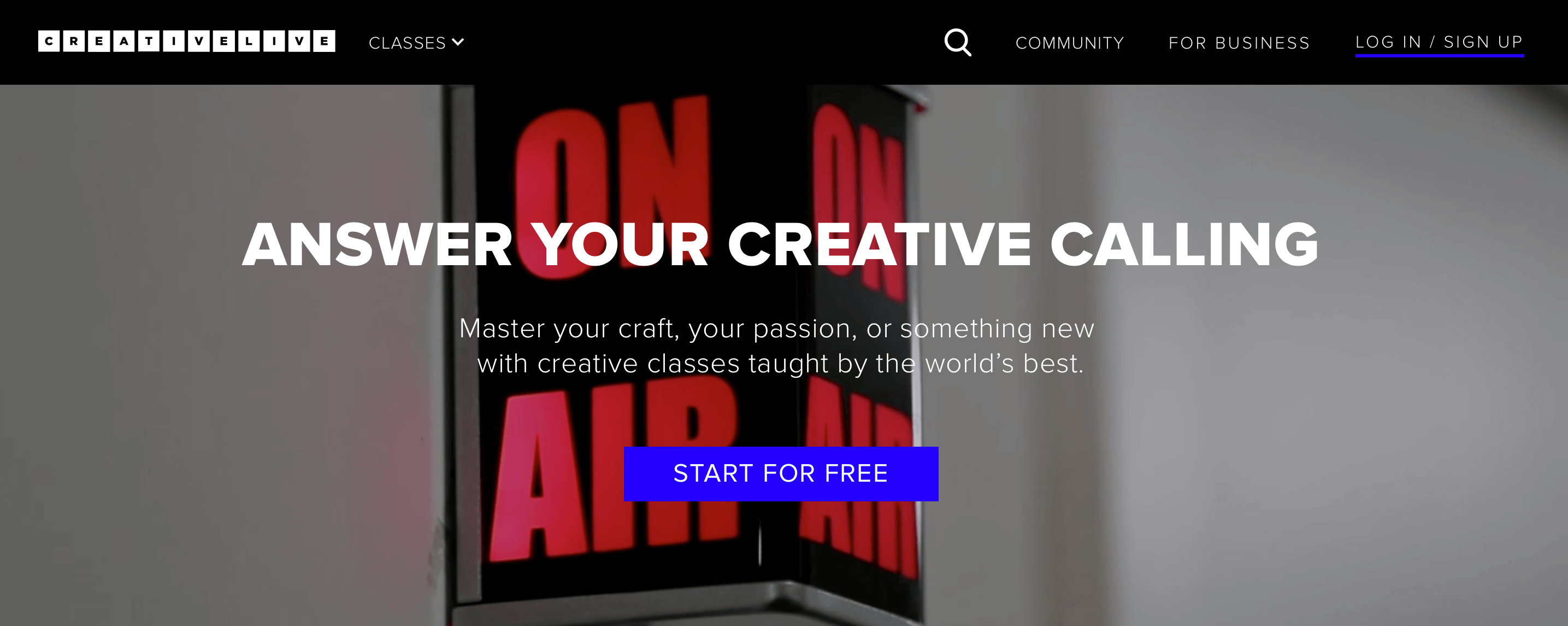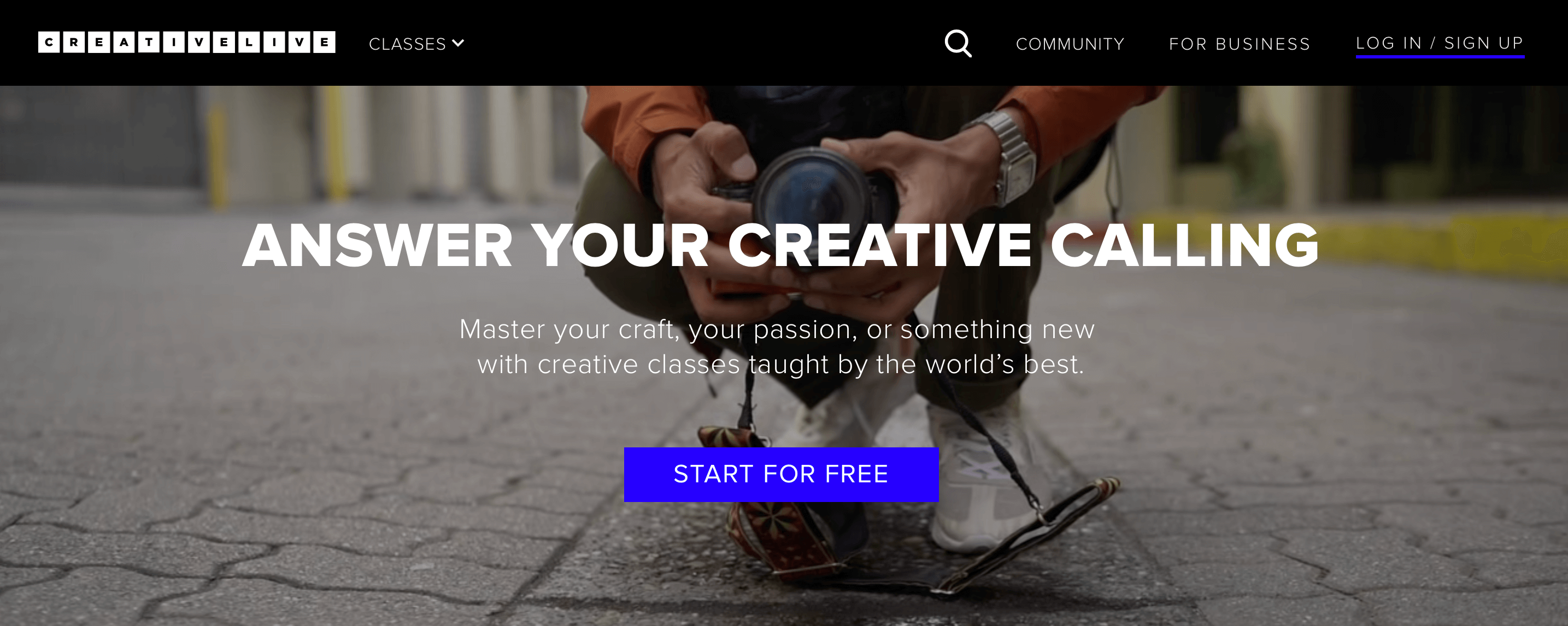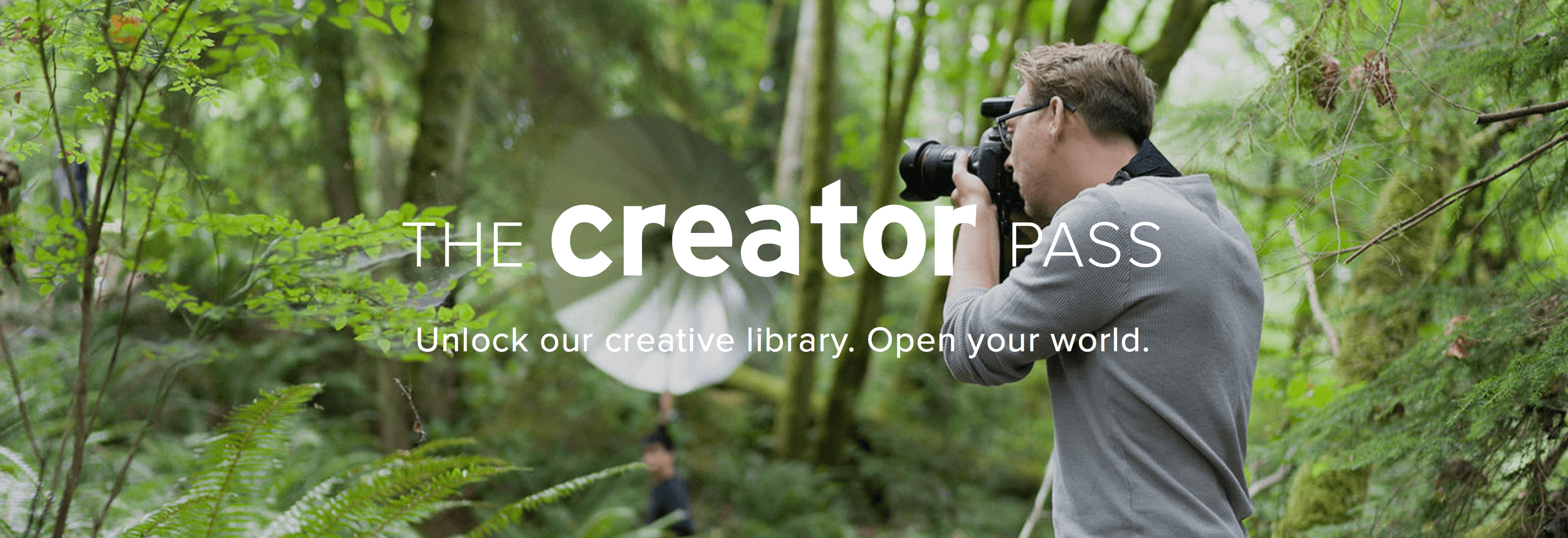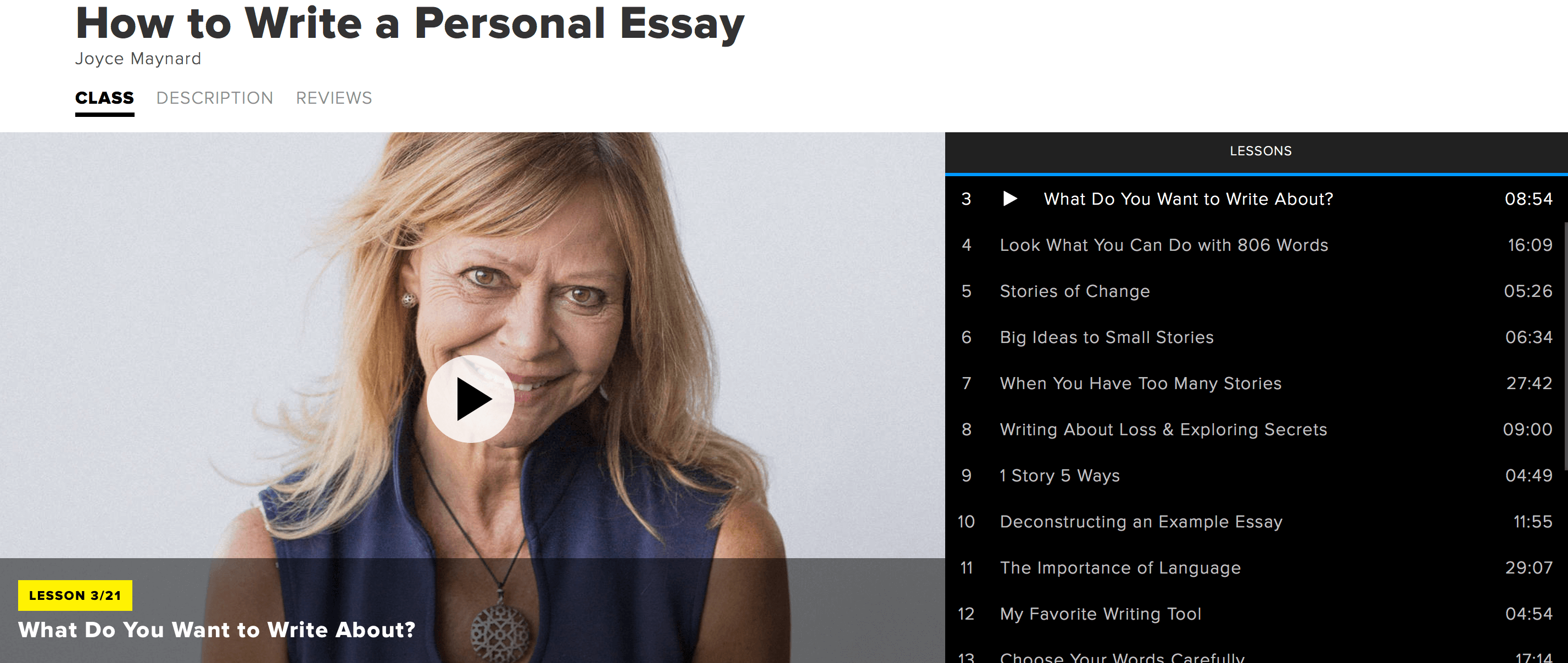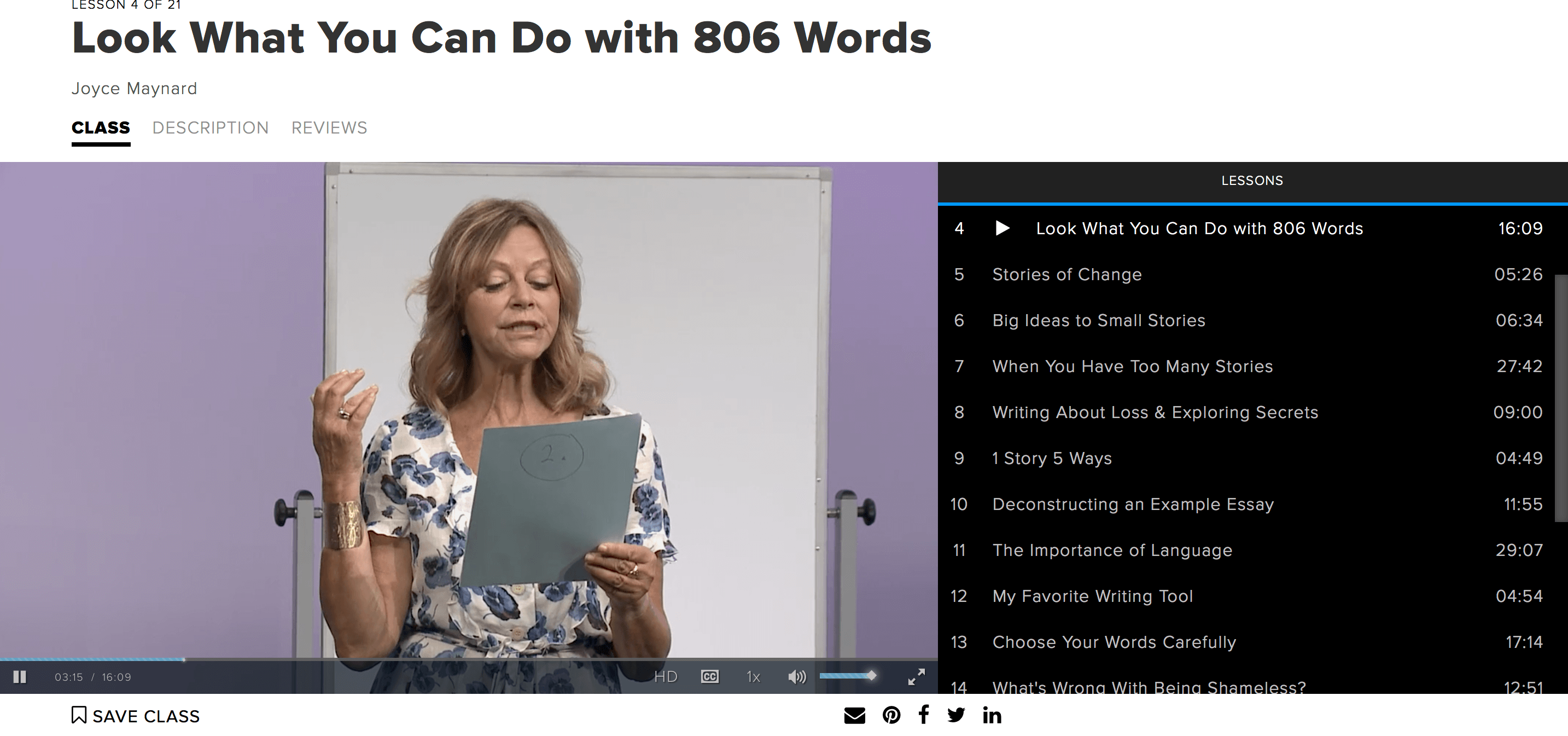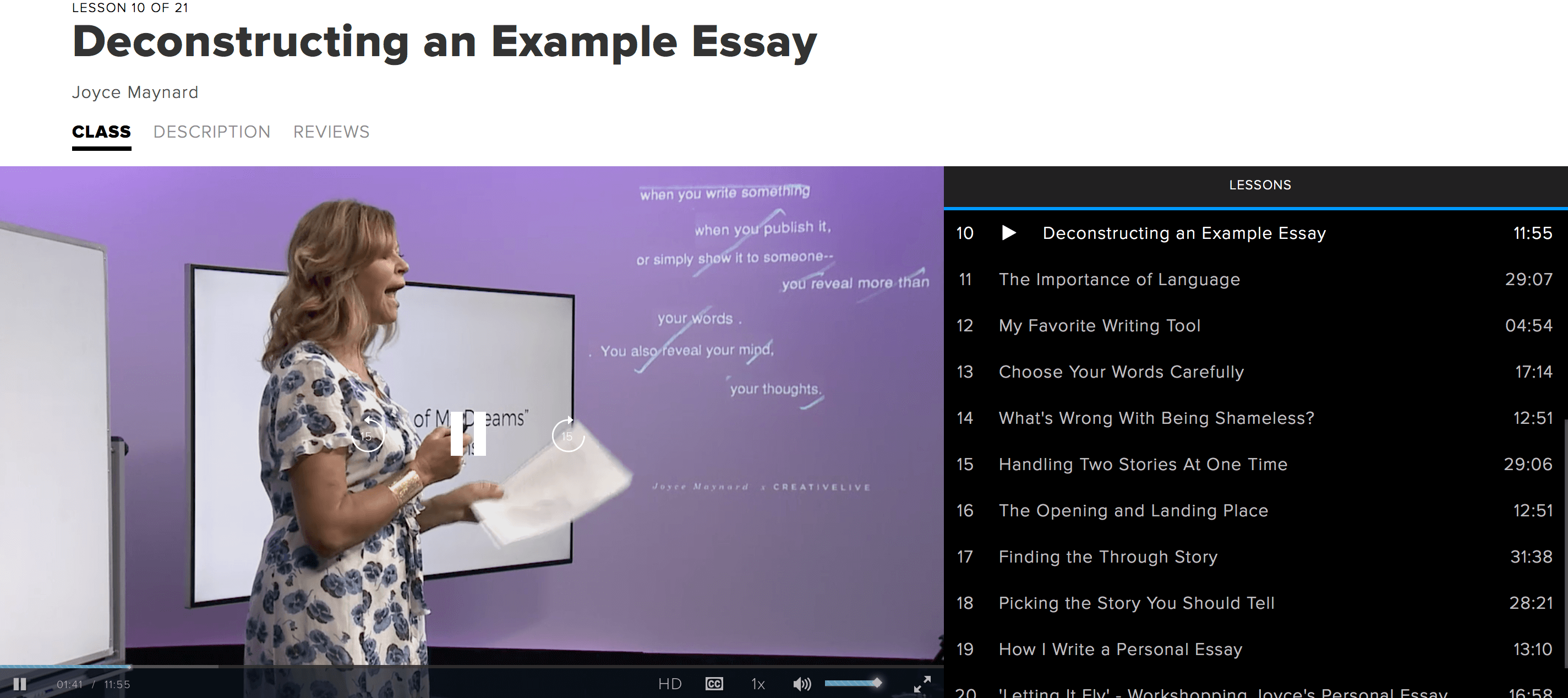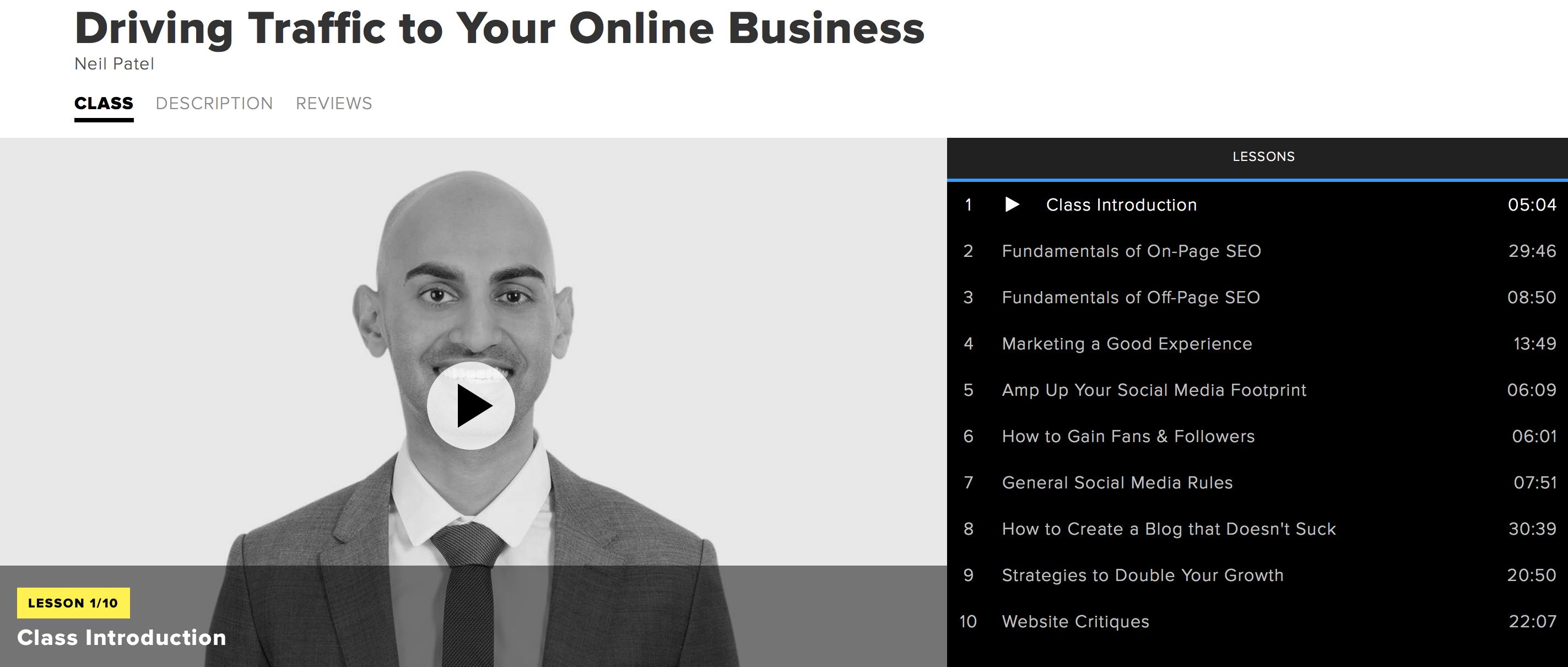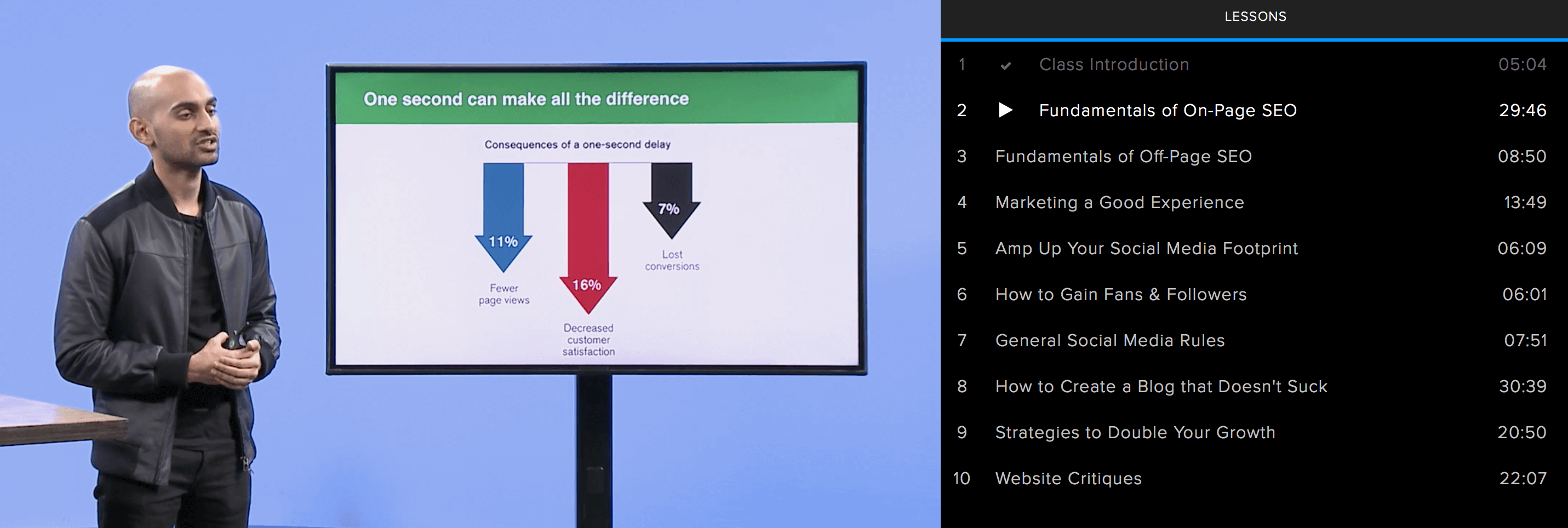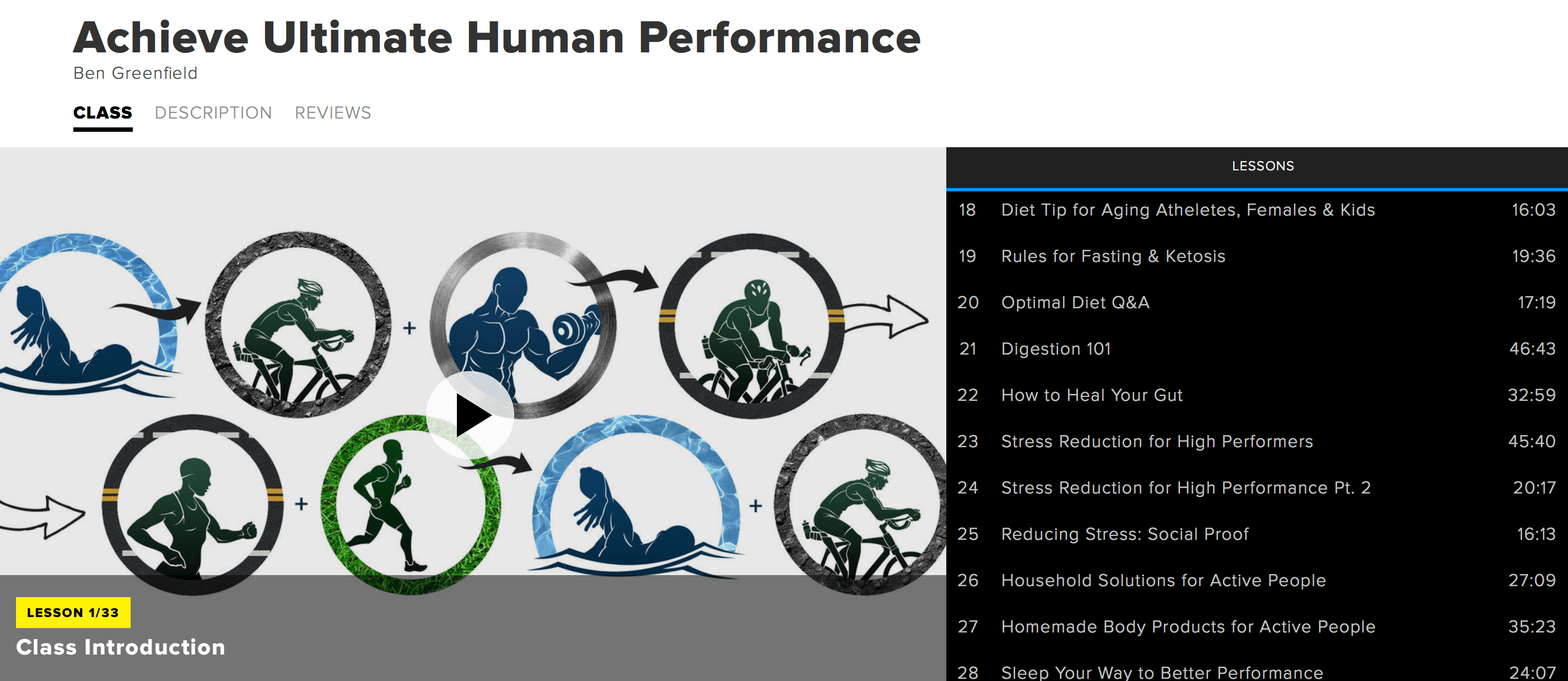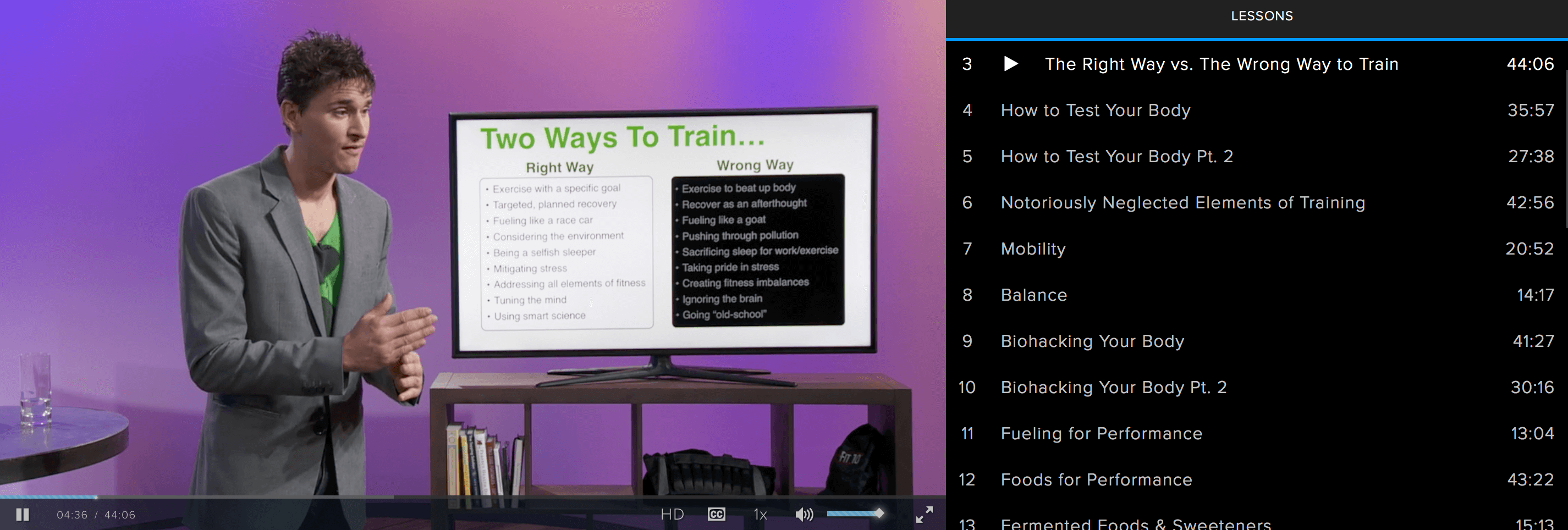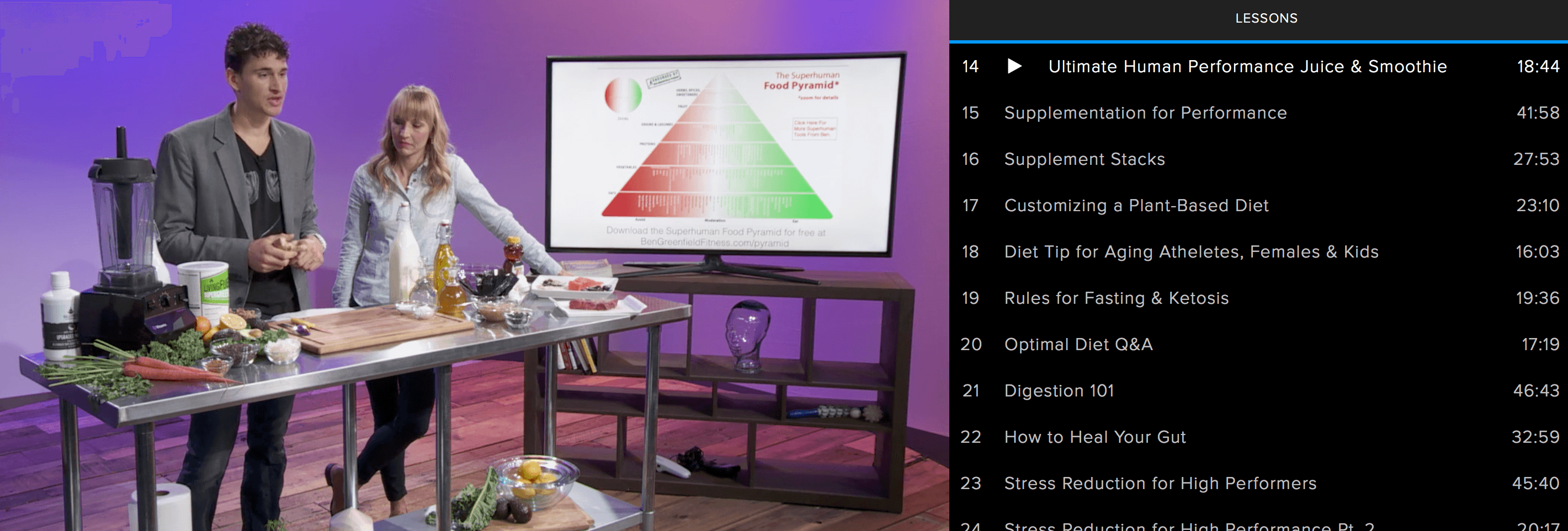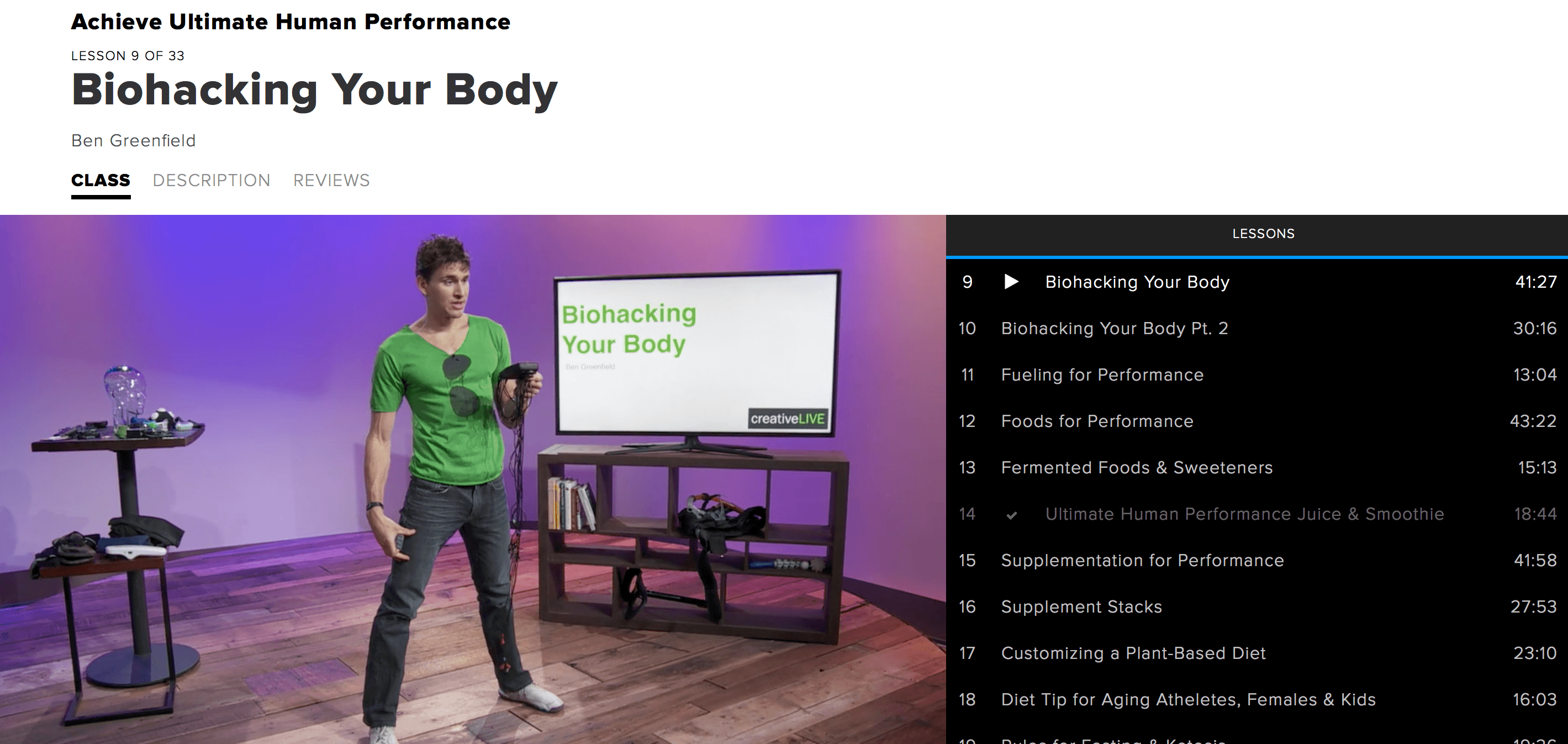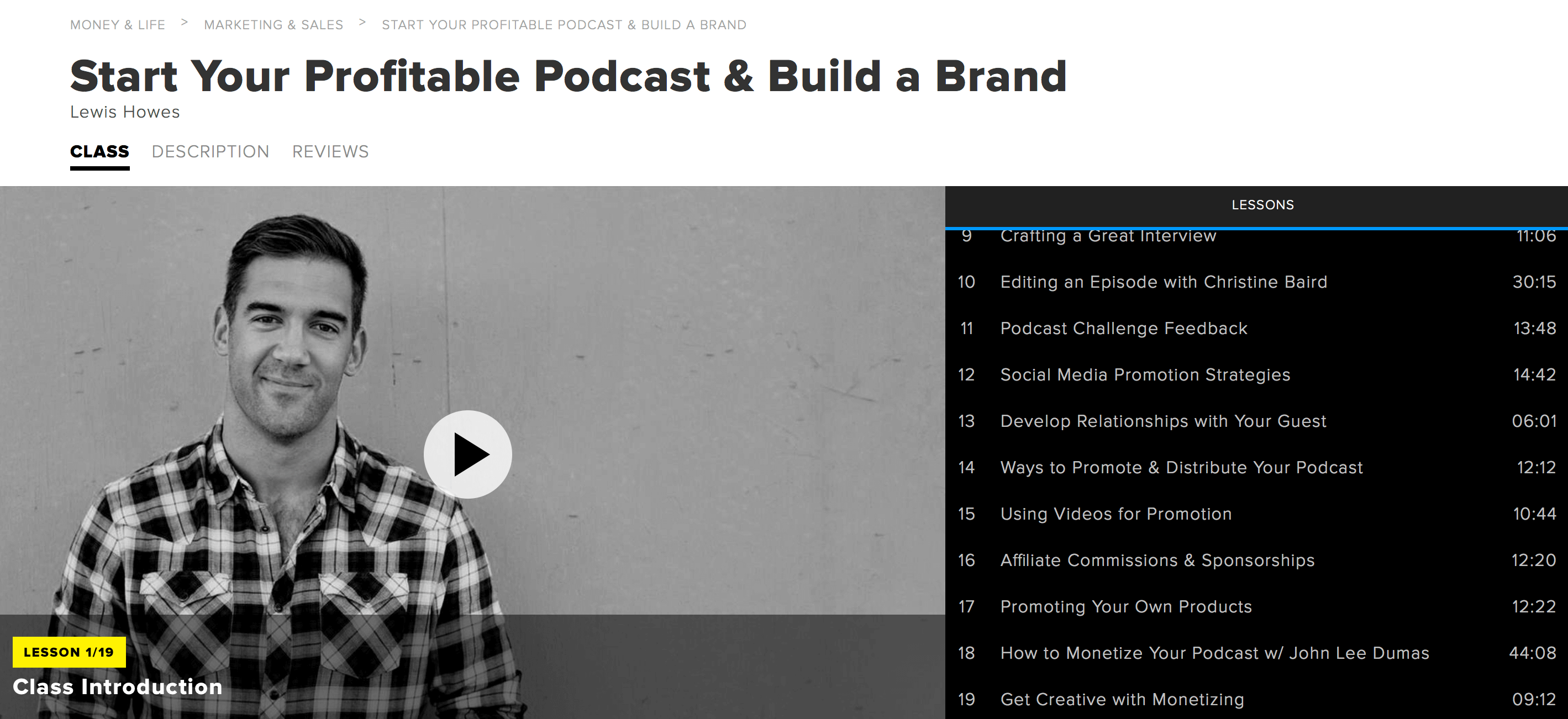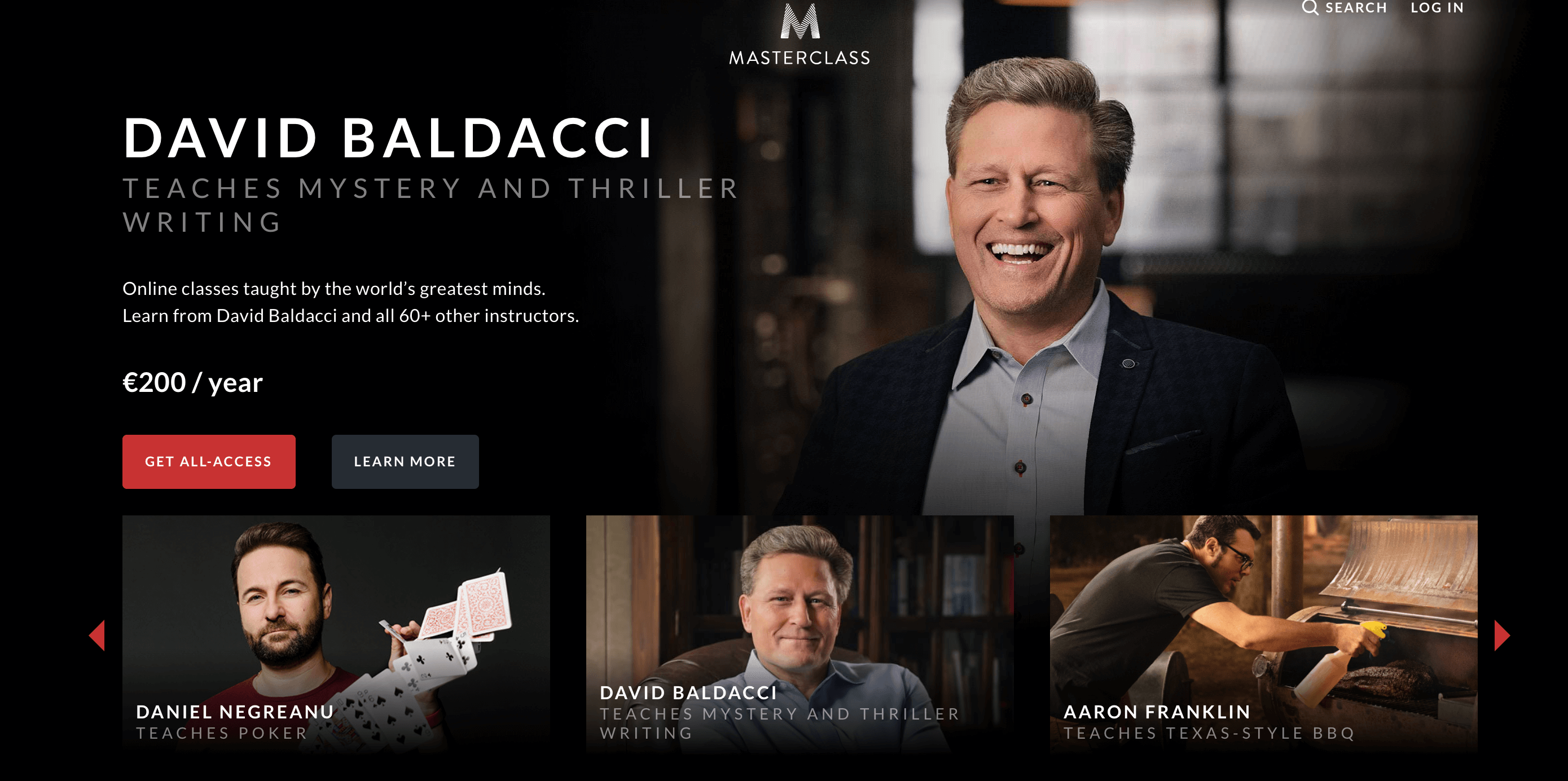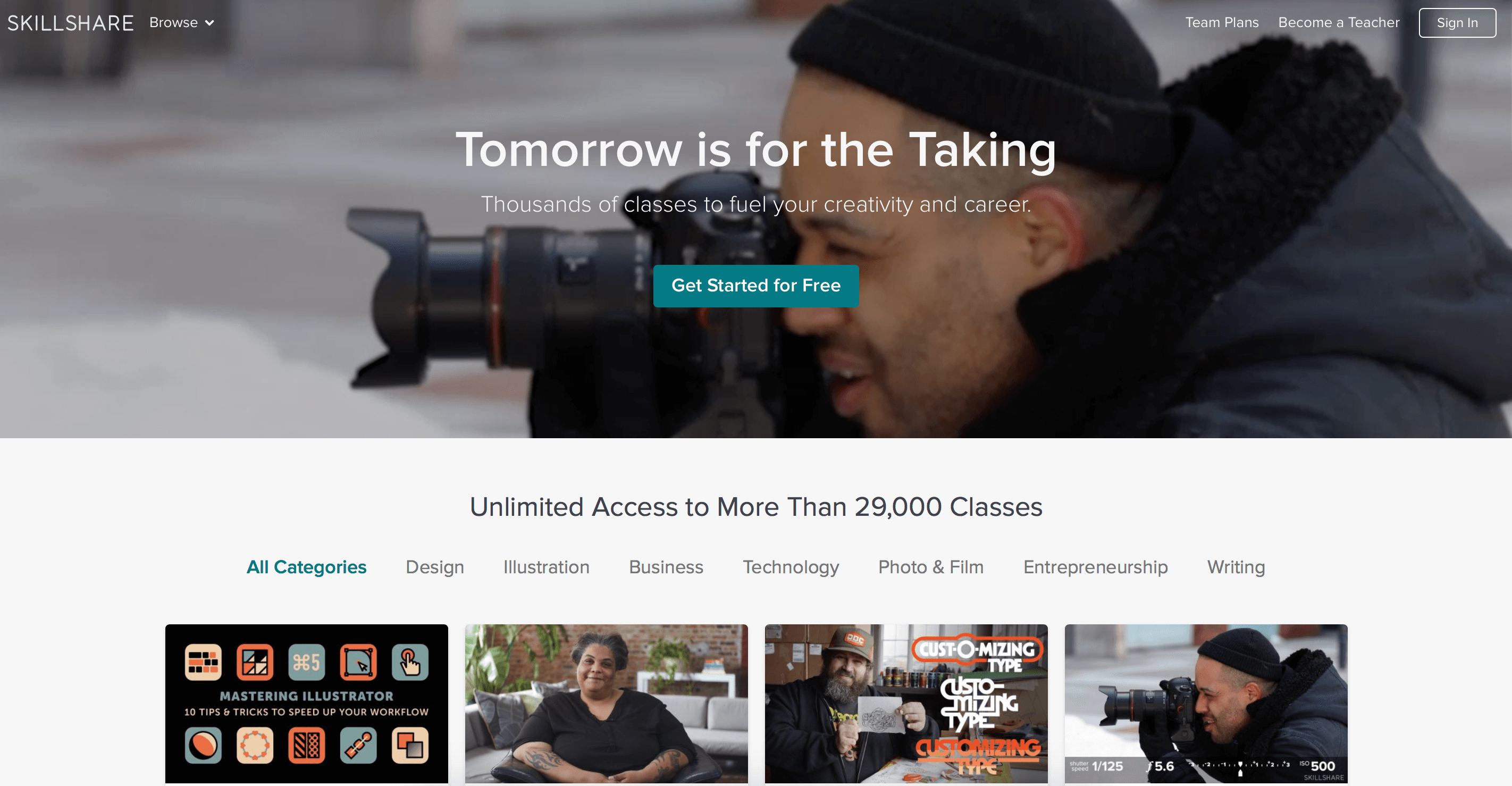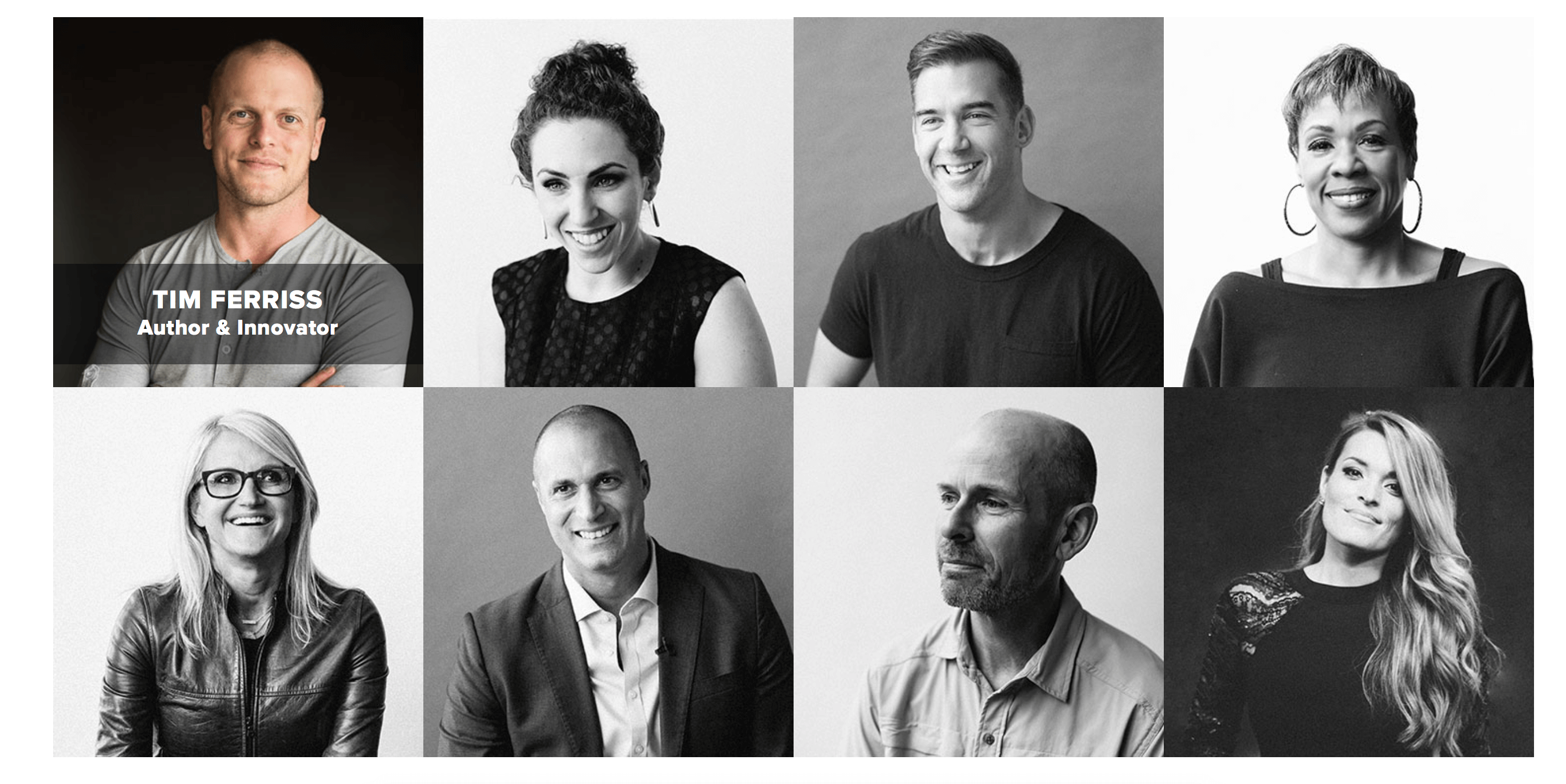In this Creative Live review, I’ll run through everything you need to know so you can see if Creative Live is worth it for you.
We’ll review the platform, usability, value, compare Creative Live with MasterClass, Skillshare, and other online learning suites, and we’ll look at reviews for specific top recommended Creative Live classes.
Is Creative Live worth it?
You can already see that Creative Live has a fantastic catalogue of classes.
Anything you want to know is right there, from stuff aimed at the absolute beginner to the intermediate and expert in all lines of craft:
- Adobe Premiere Pro-CC Video editing? Check!
- Business and financial advice? Check!
- Social media courses? Check!
- Podcast storytelling? Check!
- Travel photography? Check!
And is much more! Everything from photo editing and camera skills to how to set up your own website, painting with watercolours, mastering public speaking, writing memoirs, and anything else you can think of.
The thing that blocks most people when it comes to Creative Live (and the thing that blocked me) was the hefty price tag these courses come with.
Like seriously, we’re talking hundreds of dollars for some of these Creative Live courses.
Tim Ferriss has his own course (it’s good too, I took it) but it’s normally priced at $149!!
I mean, I love you, Tim, but I’d rather just read one of your books than pay that price.
What Creative Live typically does though, to make it easier to get the courses, is they run these regular sales. They’ll slice the price of a course by 60% and there will be a little timer ticking down telling you when the sale ends.
To be honest, it’s no biggie if you miss the end of the sale because there will be another one in a few weeks (most likely).
Another thing Creative Live does is stream certain courses for free.
You can see upcoming free Creative Live classes here.
This is interesting but kind of sucky because you have to be available at the exact time the class is streaming and watch it all the way through in one go, which is not practical!
Especially when a lot of these courses, for my time zone, end up streaming at four in the morning.
So you could just pay whatever price tag is up for the specific course you want, but the approach I much prefer is getting the Creative Live Pass.
I’m not sure how long Creative Live have been offering the pass. I might be misremembering but I can’t seem to recall them having the pass a few years back.
Did Creative Live pick up on what a great idea this was from MasterClass? The reason I’ve been able to take so many MasterClasses (which are similarly quite pricy per course) is because I have their All Access Pass.
The Creative Live Creator Pass is an absolute steal.
It’s only $25 per month (if you get the annual pass) and $39 if you want to pay on a monthly basis and you get thousands of classes!
I seriously don’t understand why people would buy a single class.
The pass is cheaper than pretty much every class at Creative Live and you get access to them all!
Even if you only wanted one class, wouldn’t you grab the pass anyway so you could sample anything that took your fancy?
It’s not like you’re tied in for life. A lot of people use these deals strategically, like Netflix. Maybe one month you know you’re going to watch a lot of courses, but next month you haven’t got as much time. No problem, just put your pass on hold and you’re not stuck paying for what you aren’t using.
Anyway, that’s the price stuff out of the way.
- Check out the Creative Live Pass here.
I think it’s an absolute bargain, but that’s also because what Creative Live offer is so fantastic.
Let’s get into the quality of Creative Live.
I’ll touch upon the general things I love about the Creative Live platform, but first let’s get into some Creative Live reviews for specific classes.
The Creative Live classes I took for this review:
I’ve got a lot more Creative Live courses lined up, but these are the Creative Live courses I took for this review:
- How to Write a Personal Essay (Joyce Maynard)
- Driving Traffic To Your Online Business (Neil Patel)
- Achieve Ultimate Human Performance (Ben Greenfield)
- Start Your Profitable Podcast & Build A Brand (Lewis Howes)
Let’s get into some mini-reviews for each of these Creative Live courses!
If you’re not interested in the specific reviews, skip down a bit and you’ll see my review on the different aspects of the Creative Live platform and how it compares to other online educational environments.
How to Write a Personal Essay (Joyce Maynard) Creative Live Course Review
I was pumped going into Joyce Maynard’s Creative Live class because there was already a 100% positive review history. And I can see why.
Joyce is a perfect teacher. This is the standard of teaching to which I personally aspire to be like.
She’s so personable and friendly that it’s easy to forget you’re watching Joyce on a screen and not actually in the class with her. She has a phenomenally positive energy, which is uplifting and calming at the same time, which cannot be faked.
There are plenty of instructors who try to fake their energy and that’s something that always turns me off – by Joyce is super genuine and I feel so aligned with her as she’s teaching.
I think this is super important because it makes you more invested in the class, more likely to absorb the lessons, and more likely to put in the work.
Also Joyce has the experience to back up everything she talks about – she’s learnt all of this through a very fulfilling career in writing. Not only that, but her students have been successful with many of them being able to publish in The New York times only after they’ve worked with Joyce.
When you take this class, you’re aiming to use the personal essay as a “training ground” for sharpening the skills you need for bigger works like the memoir.
So if you’ve always dreamed of penning your memoir but find it too daunting, this is a great place to start. And once you’ve sharpened your writing tools here, Joyce also has a course specifically aimed at memoir writing (I haven’t taken that one yet, but I’m sure it’s as fabulous as this one).
The syllabus is superb and kicks off with a great module on where you get your ideas from. If you have no idea where to even start with your personal essay writing, you’ll have more ideas than you’ll know what to do with by the end of this module – and you’ll even know if they are good enough to write about or not.
There’s a ton of nitty-gritty stuff in Joyce Maynard’s Creative Live course. It’s not just theory or clichéd advice that you’ve heard a million times before, which is what most writing courses are like. Joyce’s course is so different and unique.
One of my favourite aspects of this course is the close analysis we do with Joyce when she shares her favourite essays with us.
There’s this one essay that’s just 806 words, but in a module that’s the same length of a tv show, we go deep into what makes it special – this kind of content truly speaks to my inner geek and I get way more value out of time spent dissecting a great essay than I would watching a show on Netflix.
Through this wonderful close analysis, we learn so much.
- We learn how to choose words that are alive.
- We learn how to globally contextualise the time of your story.
- We learn how to learn character through incidental attitudes.
- We learn how to make your theme clear within the first sentence.
- We learn about “power” phrases, words, and essays and where to put them in your sentences.
- We learn how to keep the reader reading in this age of the internet and cellphone pulling the reader’s attention all the time.
The module entitled “Look What You Can Do With 806 Word” is one of my favourite lessons on writing in any space.
I’m talking out of all the online classes I’ve taken, all the books I’ve read, all my courses, classes, and lectures at Oxford University, this one particular module makes it into my all-time favourites.
I think this module will speak not only to the seasoned writer, but would be a perfect module to show someone who wants to get into writing for the first time – it really makes you see what is possible as a writer.
Obviously I consider this module worth the price of the course alone and would have been happy spending full price just for this.
The fact that I’ve got the Creative Live pass and saved a bunch of money makes it all the more sweet.
Another module I loved was when Joyce took the audience members and helped them break down their potential stories.
I love anything that goes deep, goes into the weeds, with close analysis and really breaking everything apart.
I just love geeking out about all this stuff. So a half-hour module just on this alone was an absolute treat.
There’s an entire module that deals with writing about grief and loss and exploring secrets. This was very rewarding because this is a subject that I’m constantly exploring and Joyce’s lessons on this gave me a lot more courage – it can feel extremely daunting to explore grief and loss in your writing, so it was so nice to feel like I had someone right alongside me for this.
It was this module that gave me the courage to start writing an essay on a subject that has gripped my heart and soul for the past year – it includes illness, death, and divorce – all three wrapped up in the same time period of my life.
You know I’m hugely vocal about MasterClass (you can see my review ranking and review 41 MasterClasses here).
I love their writing courses and have often said they are the best writing suite on the internet.
But the Joyce Maynard courses on Creative Live are easily on par with those MasterClasses.
Joyce Maynard is a world class writing instructor and I can hands-down recommend her courses to writers of all genres – but especially writers of memoir or personal essays.
I’ve now, having finished this course, immediately started taking another Joyce Maynard course called ‘Writing Your Story’.
You can check out my full review of Joyce Maynard’s Creative Live course here.
Driving Traffic To Your Online Business (Neil Patel) Creative Live Course Review
Neil Patel gets right into it in this Creative Live course.
At the beginning was a lot of stuff that I knew already, but to be fair it is good to have a refresher.
I’m talking about the difference between high intent and low intent keywords and a solid grounding in the fundamentals of long-tail keywords and optimising for income.
Embedded within the basic fundamental advice (which, trust me, was still massively helpful as a refresher) there was a lot of stuff I didn’t know. Again, still basic, but was to do with how to figure out what content to generate.
Neil’s tips were immediately practical for me and really helped me out on a niche site I’ve been working on.
About half way into the first module, I started getting more and more stuff that was tickling my brain in different ways.
This is when my note-taking really sped-up.
Looks like there certainly is plenty for me to learn.
Like, I didn’t even know about latent semantic indexing (if you’re already into SEO, this means something to you). If this doesn’t mean anything to you and you’d like to get a better grip on your company’s SEO, Neil’s course is worth checking out.
Actually before the first module of Neil’s course was finished, I had to pause the video to immediately implement his advice.
Do you know how common that is?
How often does that happen to you when you’re taking a course?
The info is SO GOOD and so practical and relevant that you feel compelled to put it into action immediately.
That’s the sign of a great course.
I got a ton of value out of Neil’s suggested link-building techniques.
This was really cool.
I won’t list all of them because you need to get the course, but my favourites, the ones that made me go, “Huh! You can do that?!” were…
- Broken link builder technique: email those who have broken links to your competitors – “Noticed it’s broken, but you could link to mine which is a bit better.”
- Skyscraper technique: make the best content (instead of 30 ways to do x, 100 ways), then write to the people who linked to the original content and ask them to link to his too.
- Internal linking: the reason Neil ranks number one for ‘online marketing’ is because he links to that page in every single other page on his website. His sidebars tell you to check out his online marketing guides.
- Do guest posts at places like Forbes: find writers already writing at these places, strike up a convo, and ask them for an introduction to an editor and they’ll do it. Find guest contributors and ask for intros. Don’t go to editors or Forbes directly. Writer to writer intro is more powerful than a cold email.
- Ego bait: write posts that flatter leaders in your industry, which help you develop relationships with these potential mentors, while simultaneously earning you backlinks from the leader’s existing followers.
For me, because there was so much information it could become overwhelming, I decided to take just three points that I could implement THIS WEEK and put them into practice FIRST.
So the three ones most valuable to me that I can start working on right now are:
- Site speed (get the site working faster)
- Work on getting links through ego bait, guest posts, broken link, and skyscraper techniques
- Find out what profitable keywords my competitors rank (also figure out who my “competition” actually is)
I also loved Neil’s module on how to create a blog that doesn’t suck.
This was a great module and the reason I liked it so much is because, firstly, if you’re a beginner this will be extremely insightful.
You’ll learn a TON.
But I loved the fact that Neil’s approach was refreshing to me, set up so that he didn’t assume I wasn’t already intelligent, and I consistently learnt new stuff that should have already been basic knowledge.
So if you’re just starting your blog, this Creative Live course is a great one to get.
It’s quick and full of instantly applicable practical advice so you can get to work on your blog the same day you watch the course. It’s also great for veterans or people who have been in the blog game a little while now and need to sharpen their tool kit.
You can check out my full review for Neil Patel’s Driving Traffic To Your Online Business Creative Live course here.
Achieve Ultimate Human Performance (Ben Greenfield) Creative Live Course Review
Ben Greenfield is a 10-time Ironman finisher, ex-bodybuilder, strength and conditioning and nutritionist coach with a master’s in exercise physiology. He also has the best health and fitness course I’ve ever taken.
Ben Greenfield’s Creative Live course is all about how to look good on the outside while feeling good on the inside. It’s about achieving amazing physical feats without destroying your body.
This is without a doubt one of the best classes I’ve taken online. This was so packed with endlessly interesting, in-depth, and new-to-me information. I felt extremely smart watching this one.
I’ll just give you a small sampling from my copious notes taken from this course and throw some random stuff that I loved learning, but urge you to take the course yourself. It will be one of the best investments you ever make for your health and wellbeing.
The reason we have to supplement, as athletes, is because we’re nutrient depleted. We’re asking the body to do more than it was meant to do.
There’s a right way and a wrong way to train.
Every time you exercise, step into the gym, hit the road, the goal is never ever just to beat up the body or exercise for the sake of exercising.
Always exercise with a specific goal.
Plan your recovery – not recovery as an afterthought.
For example, for every mile running on the road, you’ll spend a minute in an inverted position. When it comes to hard weight training, after every session spend 5 minutes in a cold shower to shut down inflammation and production of HSCRP (an inflammatory biomarker). If you’re going to the gym for 45 minutes, it’s technically 50 minutes because you need that 5 minute cold shower planned in.
Two strategies for going beyond training:
- Periodization – for example, someone who wants to look good naked might have a period during the winter for mass building and injury prevention, a period during spring where there’s body toning and work on hypertrophy, and summer is maintenance phase, and autumn is movement prep and functional strength training for a sport.
- Greasing the groove – injecting small amounts of fitness during the day – 100 jumping jacks an hour. A deadlift a few times a day. Pull-up bar at your office.
Here’s a sample day from Ben Greenfield:
- Begin every day with 10 mins of yoga and calisthenics with deep nasal breathing
- 20 bodyweight squats for every bathroom break
- 25 kettlebell swings, tire flips, or barbell lifts at least once per day
- Invert 1-2 x/day
- Using treadmill desk/standing work station
- Doing 100 jumping jacks for every hour sitting
- Cold thermogenesis 2-3 times per day
- Deep diaphragmatic breathing
- Workout end of day (4-6pm) – metabolism, core temperature, functional movements are best
Ben Greenfield’s diet philosophy is to eat the earth – fermented stuff and dirty things that have had the sun on them.
Ben Greenfield also has some great juice and smoothie recipes.
When Ben first tried this recipe, he immediately had one of the best runs of his life. Now he uses it as a go-to whenever he wants to feel super good:
Golf ball sized piece of ginger, 5-10 carrots, 1-2 chopped lemons, a handful of cilantro, blend this stuff then add and stir in 2 tablespoons of olive oil, a teaspoon of Aztec or Himalayan salt.
Ben Greenfield’s ultimate human performance smoothie:
For the ultimate human performance smoothie, you’ll need 3-4 Brazil nuts or walnuts, 3 large kale leaves, 1 avocado, enough coconut milk to make the smoothie super thick, 2 servings of living fuel protein or super greens, a couple of pinches of cinnamon, a couple of pinches of salt. Blend this stuff then add a few pinches of coconut flakes, a handful of spirulina (which you can get from Energy Bits), then a few pinches of organic cacao nibs, then add the Brazil nuts or walnuts in and then give it another blend. You can also add a tablespoon of coconut oil or MCT oil. You could also throw a raw egg in there.
You should also “empty the trash” – a.k.a. clean up your cells with a monthly 24-hour fast or a weekly 20-hour fast or a daily 12-hour fast.
This course is all about how to be a mix of Hulk, Wolverine, Captain America, and Batman.
And Ben Greenfield teaches us how to do that extremely well by going into the ultimate human performance ideal skillset in-depth. We learn about how to gain strength, power, speed, mobility, and balance.
If you do a workout and then go to the gym 48 hours later and don’t perform better or the same on that lift you have no business being in the gym working that particular movement that day.
Muscle soreness shouldn’t last longer than 48 hours. It will peak somewhere between 24 and 48 hours and is basically due to calcium leakage (not lactic acid). But if you’re still sore after three days you’re not recovering well enough.
Low heart rate doesn’t necessarily mean you’re getting fitter. The lower the heart rate the harder it is to get it up when it comes to intense exercise. Going too low can mean your adrenal systems are shutting down. Ben’s heart rate in the morning is 39, but he knows if it goes to 37 or 36 it’s not because he’s getting healthier but instead needs to back off on the working out.
If you’re suffering from adrenal fatigue, you want to take supplements that increase cortisol (some people think that’s dumb but when you’re adrenally fatigued your cortisol levels are at rock bottom) – supplements that increase cortisol = red ginseng, liquorice root, adaptogens like ashwaghanda and rhodiola (which I’ve written about extensively already and benefitted from when my cortisol levels where too low). Ben recommends Inner Peace.
Coffee can cause adrenal fatigue but when it’s balanced with l-theanine from green tea (I’ve also written about this and have recommended this combo for years) you can mitigate many potential adrenal exhausting effects. Ben recommends instead of that second coffee of the day, have green tea. He personally only has one cup a day and goes 6 weeks caffeinated, 2 weeks not caffeinated. It takes 10-14 days to reset your adenosine receptors (the things in the brain that work on tiredness and are interfered with by caffeine).
Ben Greenfield is living proof that everything he says works.
I was thinking this due to another thought I had watching this course – “Wow, he’s one of the best speakers I’ve seen.”
Not only is the content and delivery equally fascinating but the fact that he’s doing this without any auto prompters or anything – you can tell his brain is in peak physical condition as well as his body.
I loved the section on biohacks and biohack stacks.
Put your body in the presence of reduced oxygen availability. Elevation training mask combined with a weighted vest on a hike. You can get way fitter way faster on a simple walk.
Cold thermogenesis + hypoxic training with a front-mounted snorkel with a cardio cap area restrictor on top of it. Great hack for swimmers and triathletes that want bigger lungs.
The vikings used to bite down on leather straps when they went into battle to improve pain tolerance and decrease lactic acid production (you can get fitness mouth pieces that help in the same way).
When it comes to fuelling for performance, the 2 most important things: nutrient density and digestibility.
So these are just a few teasers, little things I picked up from Ben Greenfield’s Creative Live course.
There is so much more in the course and I truly implore you to watch the course, study, take notes, and apply it to your life.
Achieve Ultimate Human Performance is the best fitness course, hands down, I’ve ever come across.
Ben goes deep into balance, mobility, foods for performance, supplement stacks, all about digestion, optimal diets, fasting, stress reduction, sleep biohacks, and so much more.
You’ll come out smarter and healthier by the end of it.
You can check out Ben Greenfield’s Achieve Ultimate Human Performance here and my review here.
Start Your Profitable Podcast & Build A Brand (Lewis Howes) Creative Live Course Review
If you have no idea where to start with your podcast, this course would be a good place to begin.
Basic questions at the beginning, but ultimately extremely focusing and important that you have the answers for:
- What’s the vision for your podcast? How many people do you want to reach? Impact? By when?
- How long are you committed to doing your podcast for?
- How much money do you want to make each year with your podcast?
Lewis goes deep into the fundamentals that you need to nail with your podcast, namely:
- Title
- Host name
- Which of the 16 iTunes categories to choose (you can choose 3)
- Bumper intro clip (15 seconds with music, production value as great as possible + create consistency and familiarity/comfort with podcast)
- Podcast artwork (you can source this from Fiverr and 99 designs)
- Description – first impression for a new listener, focus on what you’re offering to the listener (instead of a bio), include social proof.
Lewis Howes’ Creative Live course will also get you thinking about what format you should choose for your podcast.
Is your podcast going to be self-hosted or co-hosted (Michael Hyatt vs Lewis Howes)?
Interview or solo?
What’s the ideal length for your podcast? Joe Rogan is 2-3 hours; John Lee Dumas is 30 minutes; Lewis Howes is 45mins to 1hour.
Are you going to video your podcast or just use audio?
For his podcast, Lewis Howes has Five-Minute Friday on Fridays, and interviews on Mondays and Wednesday.
You should schedule things like a real radio station for your podcast.
Lewis Howes goes deep into what it takes to find the right guests for your podcast.
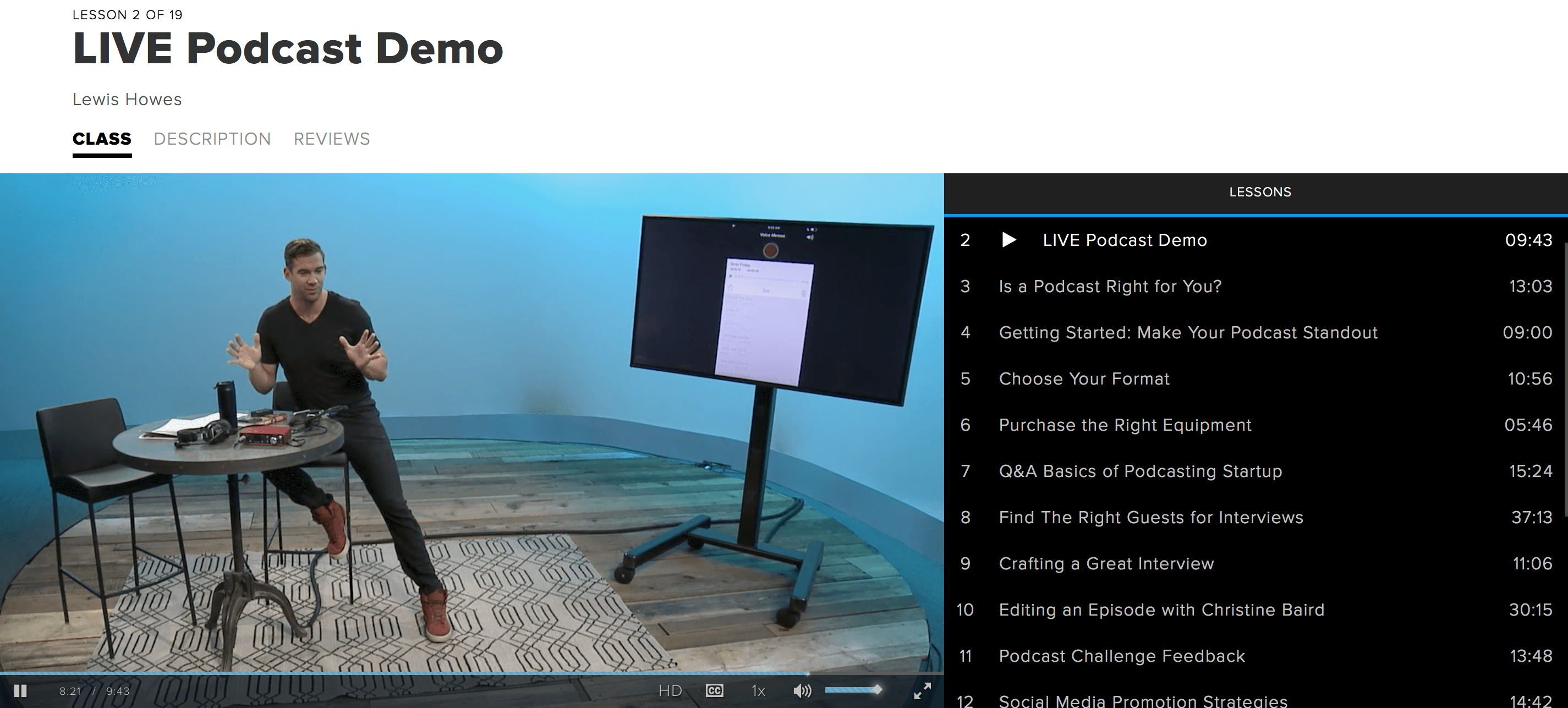
You need to show people how turning up on your podcast will help their goals.
Ask yourself:
- What am I going to give to this guest?
- How can I serve them at the highest level?
- How can I figure out what matters most to them right now? start with people in your network.
This is what Lewis Howes asks himself every time he attempts to get a new guest on his podcast.
Ask yourself these questions, answer them in detail, then start with your already established network to begin booking your first podcast guests.
Record unique experiences that set your guest on your podcast apart.
This is one of many great tips that I loved in Lewis’ course.
You should record unique experiences that the guest hasn’t done before (very important when someone is on a podcast tour and has probably been asked the same ten questions a hundred times that month).
These unique experiences are also great to use as a video promo piece.
Lewis throws out some examples:
- Staring contests
- Thumb wars
- Workout together
- Teach a juggling trick
- Rapid fire Q & A game before intro
- “When I say a word tell me the first thing that comes to mind” (before even getting into the episode)
Be like Howes. Be the Jimmy Fallon of podcasts. Because, as Sally Hogshead says: “Different is better than better.”
There’s also a ton of value in Lewis teaching you how to craft a great interview.
Here are a few brief bullet points from my notes on that:
- Start with their background – get them to tell stories before they were a big deal
- Ask them questions about their struggles
- Follow the natural flow of the conversation (script is only there in case you really need it)
- Open up your own vulnerability first
- Ask them the biggest lesson they’ve learnt
- Invite authenticity by really listening to what they’re saying
- Set them up to win
Tell your guest that you want this to be the best interview ever and you are both going to really need to “go there” to make it happen.
- “Are you open to that?”
- “Do I have permission to ask you everything and anything I need to to make this the best interview we can possibly make it?”
- “Is there anything off limits that you don’t want to talk about?”
There’s so much more depth in Lewis Howes’ podcast course, but if I had to pick one aspect I liked the most it was how deep into the weeds we go.
For example, the editing episode, which is 30 mins long, is worth the cost of the course alone.
These were real tangible and practical tips to cut your learning curve in half massively.
I’ve been using Audacity to edit my own stuff, but have only been relying on remembering what my DJ friend taught me about the program way back in university (which consists of knowing how to hit record, cut, and export – with low success rate) so to see this go real in-depth was fantastic.
You’ll want to have a podcast clip you’re working on open as you go through this part of the course.
If you’re thinking of getting a podcast started, or even if you already have one up and running and you want to fine-tune your process, the Lewis Howes Creative Live course is a must-watch.
You can check out How To Start Your Profitable Podcast & Build A Brand here.
Creative Live vs MasterClass vs Skillshare
Those really are the big three, aren’t they?
Now we’ve looked at some reviews for specific Creative Live classes, let’s talk about how Creative Live compares to MasterClass and Skillshare.
Creative Live, MasterClass, and Skillshare are all very different, but equally amazing. So it really depends on what you’re looking for.
With MasterClass, you’re being sold the instructor.
The biggest names in filmmaking, writing, cooking, photography, music, and various other fields sit down and go over their life’s work, imparting the wisdom they’ve learnt over the course of their career.
Some MasterClasses are more general in wisdom, while others are structured tightly with projects for you to complete and a well-refined syllabus.
By the end of the James Patterson Writing MasterClass, I had the first draft of a novel complete.
Daniel Negreanu improved my poker game. Garry Kasparov improved my chess game. And Gordon Ramsay got me cooking again for the first time in years.
MasterClasses are sleekly produced, well-planned, and incredibly entertaining – it’s infotainment at its finest.
You can check out my reviews and ranking of 41 different MasterClasses here and check out MasterClass here.
With Skillshare, you’re being sold basic but useful skills.
There are some big name instructors. But they aren’t super big and the emphasis is more on learning a skill in classes that typically run under an hour in length (compared to MasterClass which can range from 3-8 hours and Creative Live which is often around 3 hours).
Practically anyone (within reason) can be a Skillshare instructor. Heck, I’m even a Skillshare instructor and you can see my class here.
With Skillshare, you typically learn the nitty-gritty stuff that will help you succeed as a creative entrepreneur. The classes are mainly design and technology based. And most of the classes are aimed at beginners.
The production quality ranges greatly with Skillshare. Bigger names like Thomas Frank have slick productions for their Skillshare classes, while smaller lesser known instructors might only use their laptop webcam to teach the class.
You can check out Skillshare and grab two months free by clicking this link, so give it a test-ride.
With Creative Live, you’re being sold the skill and the instructor.
You have big names with Creative Live. They’re not Martin Scorsese or Samuel L. Jackson but you’ll still recognise them. People like Tim Ferriss, Lewis Howes, Joyce Maynard, and Neil Patel.
These instructors aren’t teaching you everything they’ve learnt over their lifetime, but rather focusing in on one aspect of their craft.
MasterClass is great for learning the processes of your heroes. Skillshare is great for learning the fundamental skills needed in your business.
Creative Live is where you go when you want to make something of yourself.
- Wanna write a book?
- Wanna start a podcast?
- Wanna learn public speaking?
- Wanna learn in-depth photography techniques?
Then Creative Live will give you the most bang for your buck.
And the range of classes is staggering – check out the catalogue and I guarantee at least 20 classes will immediately grab your eye.
Creative Live production review
The Creative Live production value and platform are both super impressive.
With Creative Live, the instructors take to this mini stage and speak in front of a small studio audience. You also have people watching live from around the world and there will be little question breaks where the instructor answers questions from online and the audience.
I really love this dynamic. Not too sure why, but perhaps because it feels more real. Like we’re actually part of something.
Instructors looking and facing the camera directly (like with MasterClass and Skillshare) is nice but really intimate, whereas Creative Live feels like you’re part of something bigger than yourself.
It also feels fresh and unique. I can’t think of any other online platform that has this signature set-up.
The platform itself is super nice to use and very intuitive. Everything is clean and easy to understand. Little things like having a transcript of the instructor rolling automatically below the video is a really sweet touch.
So far I’ve been really impressed with Creative Live and I have at least 2-3 classes on the go at any one time.
If you’re looking for some more Creative Live class recommendations, here are a few that I’m currently in that I’m getting a lot of value out of:
- The 4-Hour Life (Tim Ferriss)
- Vlog Like A Boss (Amy Schmittauer)
- Writing Your Story (Joyce Maynard)
- Meditation For Everyday Life (David Nichtern)
- Start A Profitable Online Business (Lewis Howes)
- Become Fluent In Any Language (Gabriel Wyner)
- Become a Better and Funnier Speaker (David Nihill)
- Maintain Your Body for Long Lasting Health & Mobility (Kelly Starrett)
Creative Live review: in conclusion
I’m thrilled with Creative Live, especially with the Creator Pass. It’s such a great deal and I’ve learnt so much that’s already furthered my business and improved my well-being.
Creative Live will be a regular staple of the content I consume online for a long time to come.
I highly recommend you grab the Creator Pass and give Creative Live a trial run for the next month.
And when you do, please let me know what Creative Live classes you recommend!
Check out Creative Live here.
